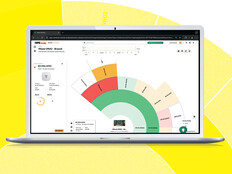In Control
The Cisco 4400 series wireless LAN controller is king when it comes to wireless LAN management — a must for any network that needs to be reliable, secure, easy to use and robust. The 4400 controller will make the IT department’s job simpler and provide end users with an efficient wireless network.
End-User Advantages
Everyone wants wireless these days, and they want it to be fast and dependable. The Cisco 4400 controller makes good on this for its users. It provides load-balancing, which allows maximum throughput. Its mobility features let users travel from building to building, using notebooks or Voice over IP phones, without dropping a single packet.
Why It Works for IT
The 4400 controller makes installing and managing a wireless network easy. The initial setup does not require any expertise; you can connect all of your existing access points within a few hours, and you can monitor and manage them from a central console that provides access to radio-frequency management, quality of service and security functions. To auto-configure new access points, plug them into the network and walk away.
Configuring multiple service set identifiers and security settings takes only a few minutes, whether you are setting up 20 or 200 access points. The 4400 controller can detect surrounding wireless devices, and it can adjust channels and wireless power to provide the strongest signal and greatest speed. This will save the administrator from having to adjust the channels and power manually to achieve optimal efficiency. The 4400 can also self-heal wireless coverage by turning up the power of nearby access points if one fails.
The 4400 offers added reliability through a feature called Remote-Edge AP, which provides a backup copy of the configuration file for each access point in case the controller suffers a hardware failure. The controller also can monitor your wireless LAN for rogue access points and then prevent access to them. It comes in configurations that can handle 12, 25, 50 and 100 access points and is 802.11n-compliant.
The controller also has built-in guest access that can restrict network access to potentially dangerous computers, and network admission control enforces security policy compliance. The controller integrates completely with other network devices, such as a Cisco wireless location appliance that provides physical location tracking of wireless client or RF identification tags within your mapped campus.
Disadvantages
One of the few negatives for this product is the initial outlay. The price of the controllers on top of the cost for the access points themselves can add up. But we depend more on wireless every day, and having a reliable and secure wireless network is extremely valuable.
There have been bugs in various versions of the software. Some people suggest using the most recent code; others advise using older, more stable code. The most recent software has worked well for me. Once you change the code on the controller, it will push out the code to all of your access points as well.
Justin Dover is network administrator at Harpeth Hall School in Nashville, Tenn.








